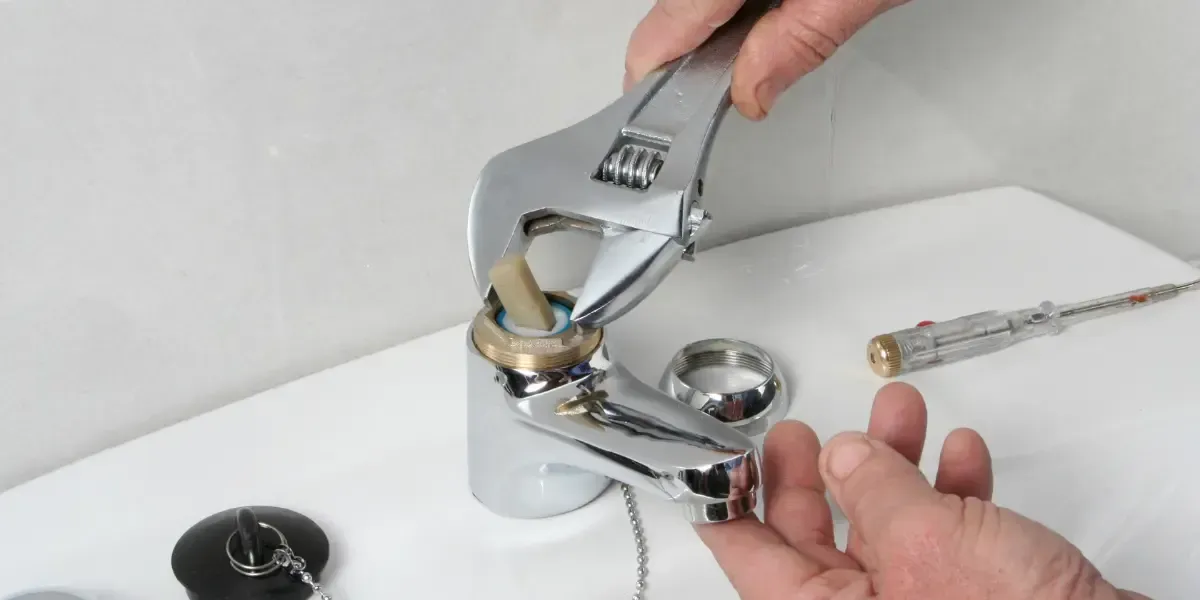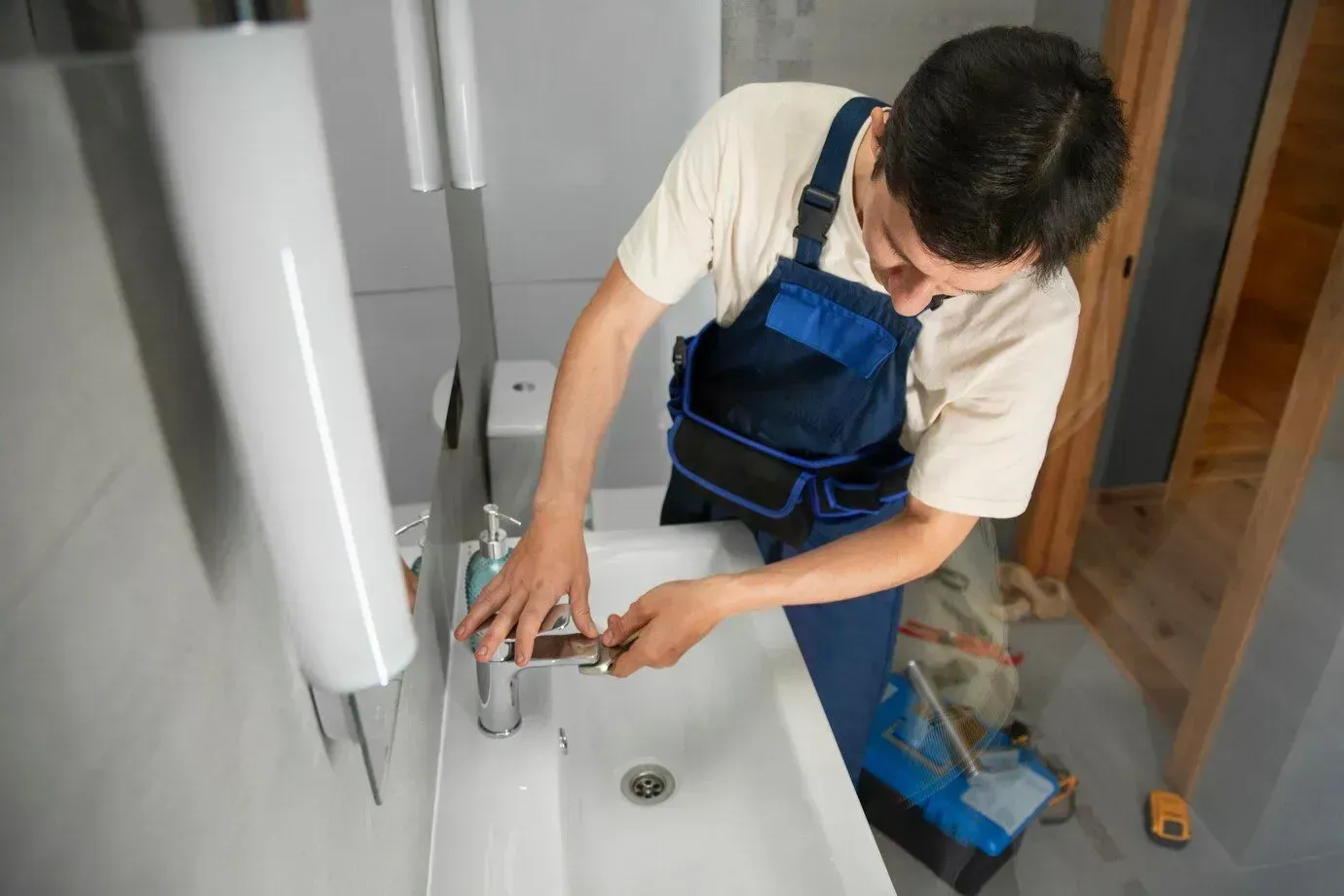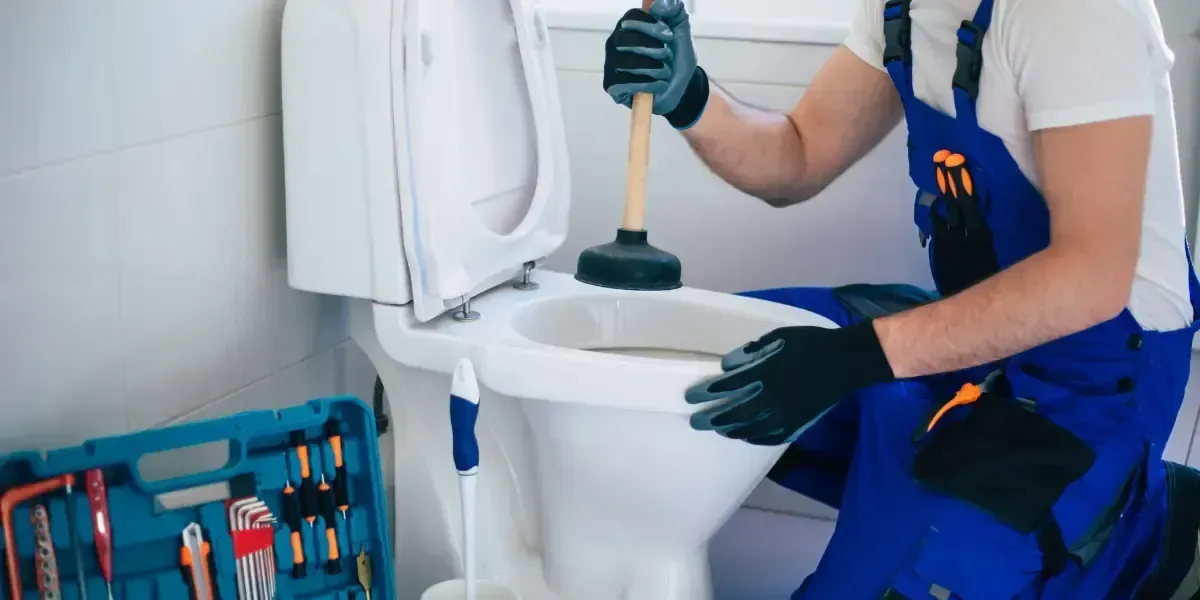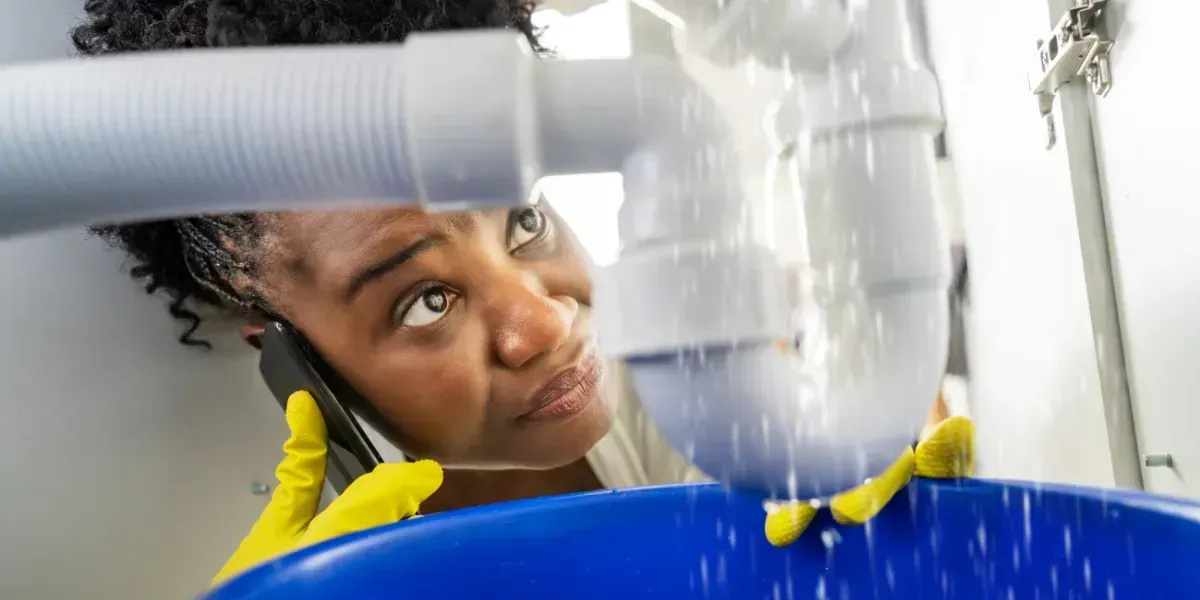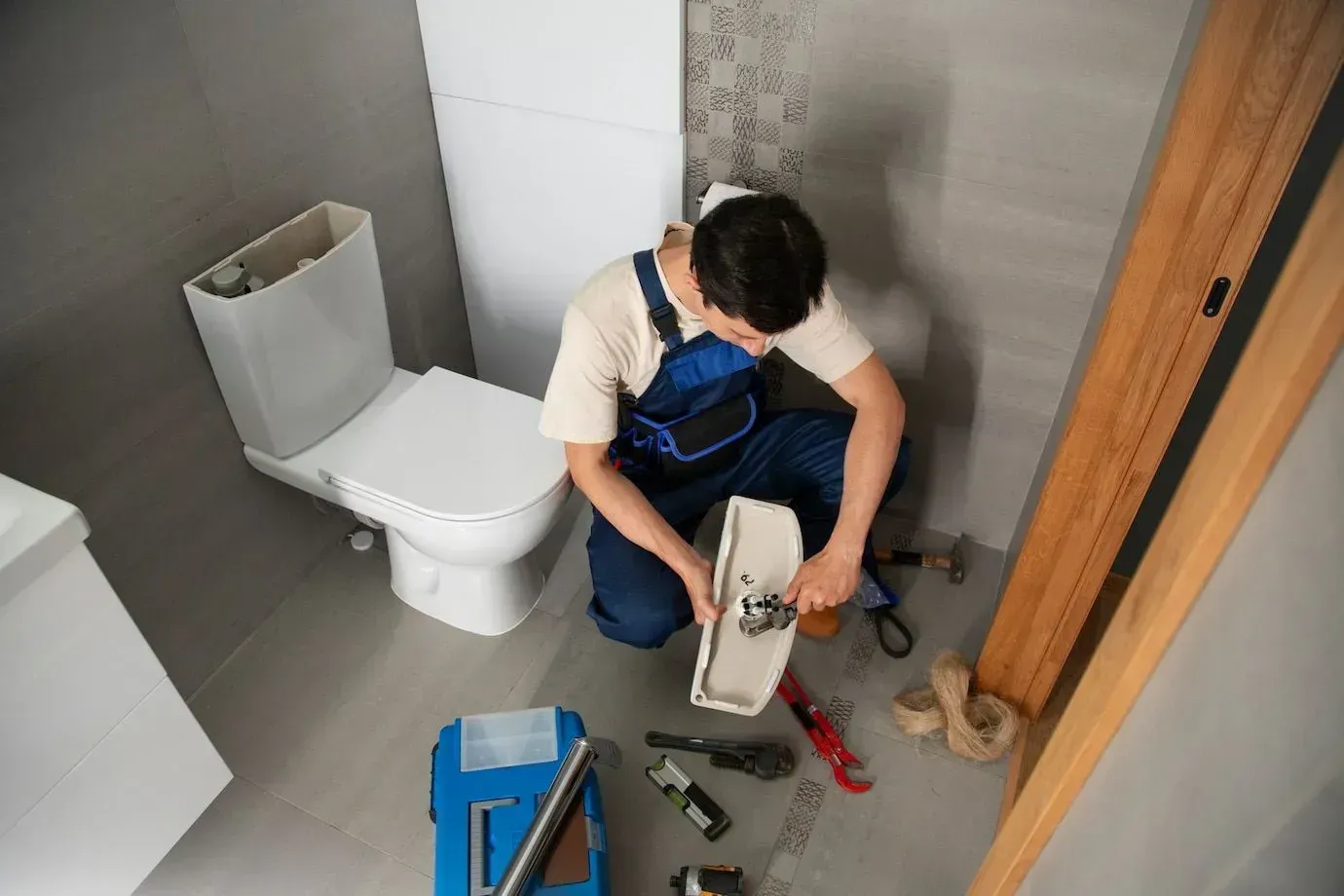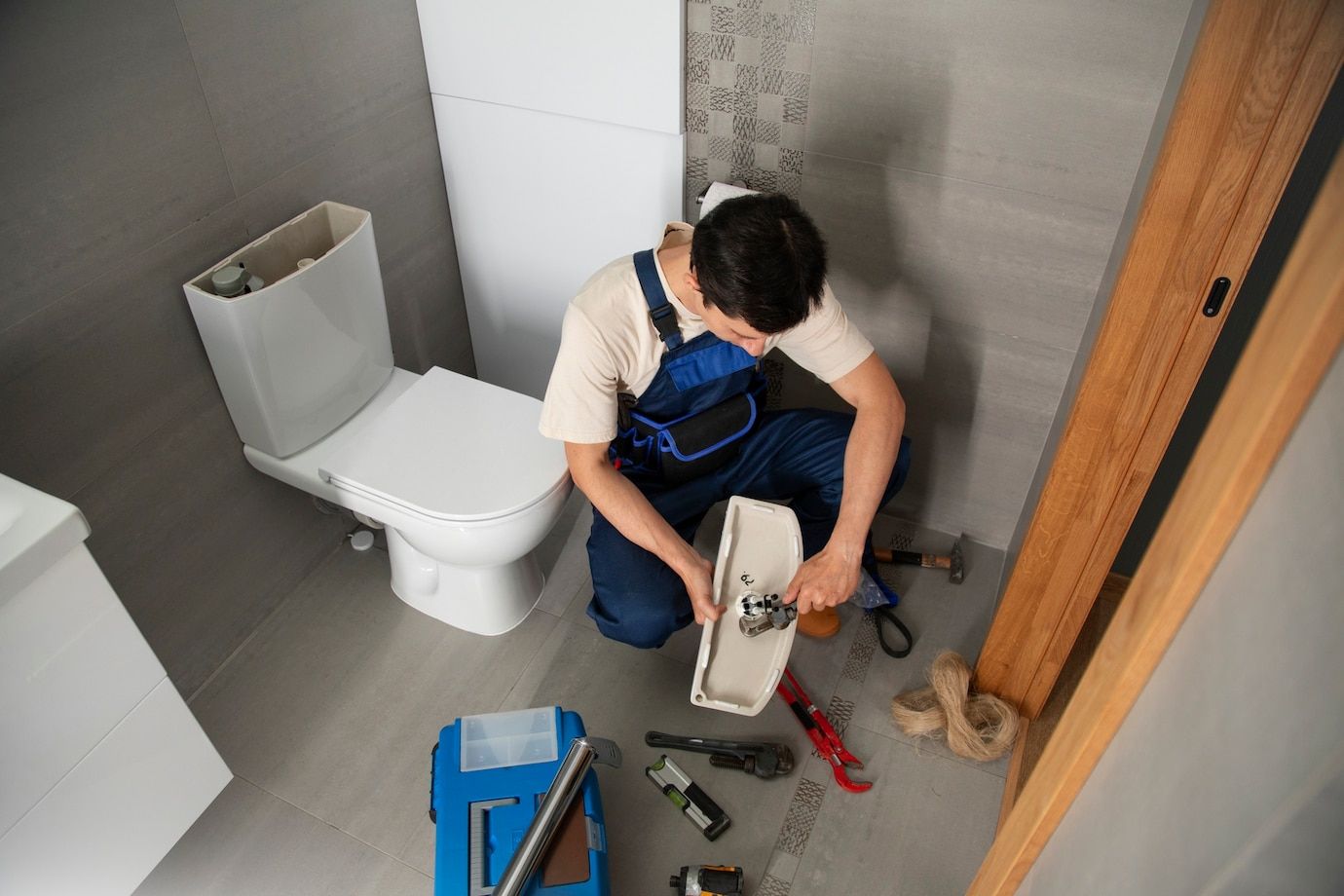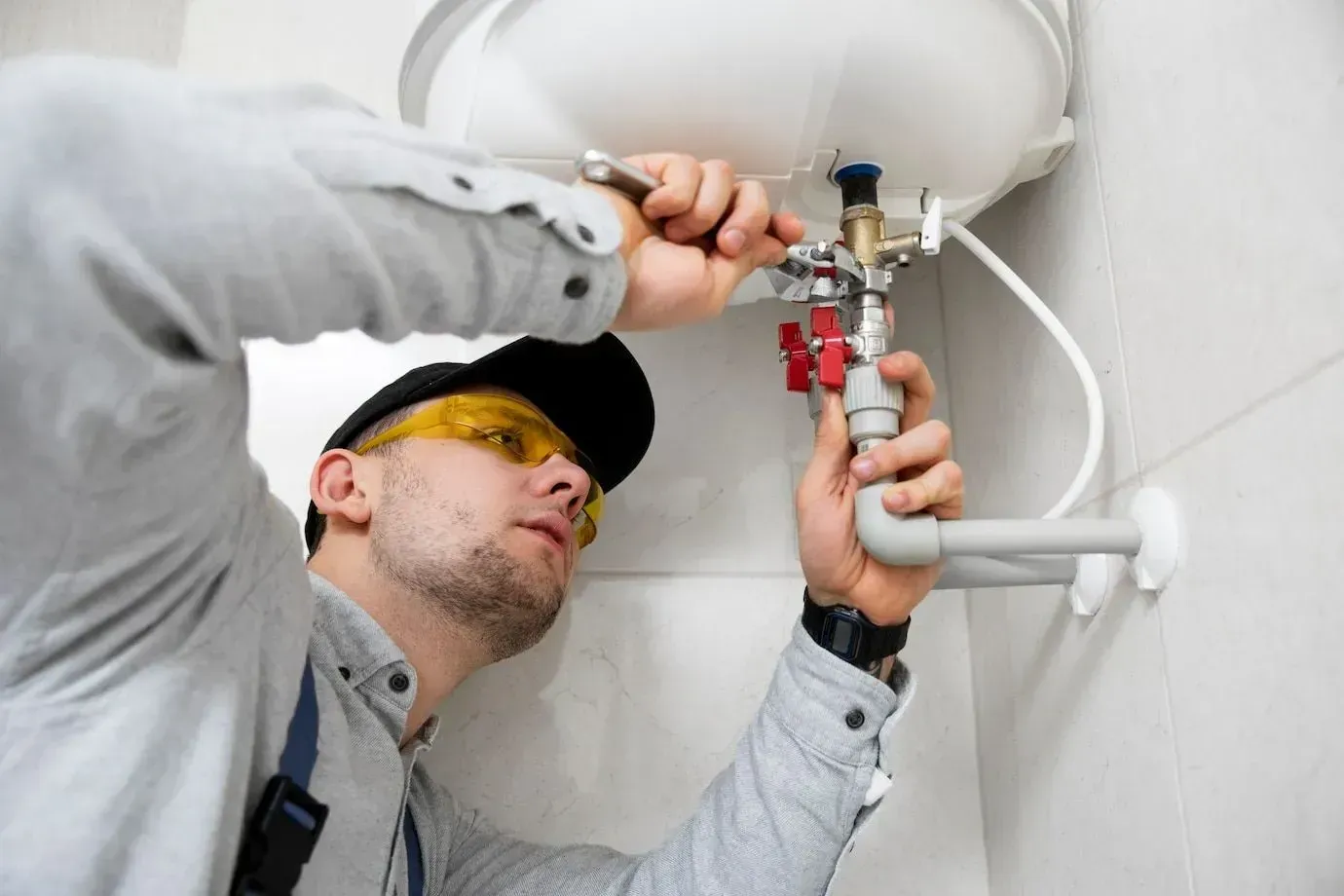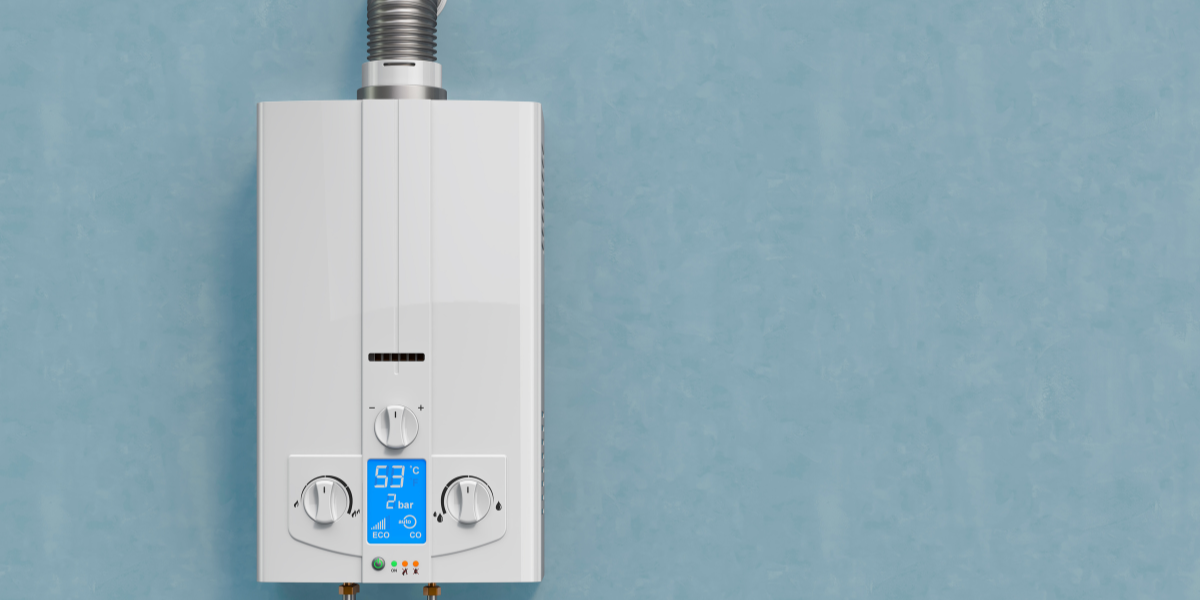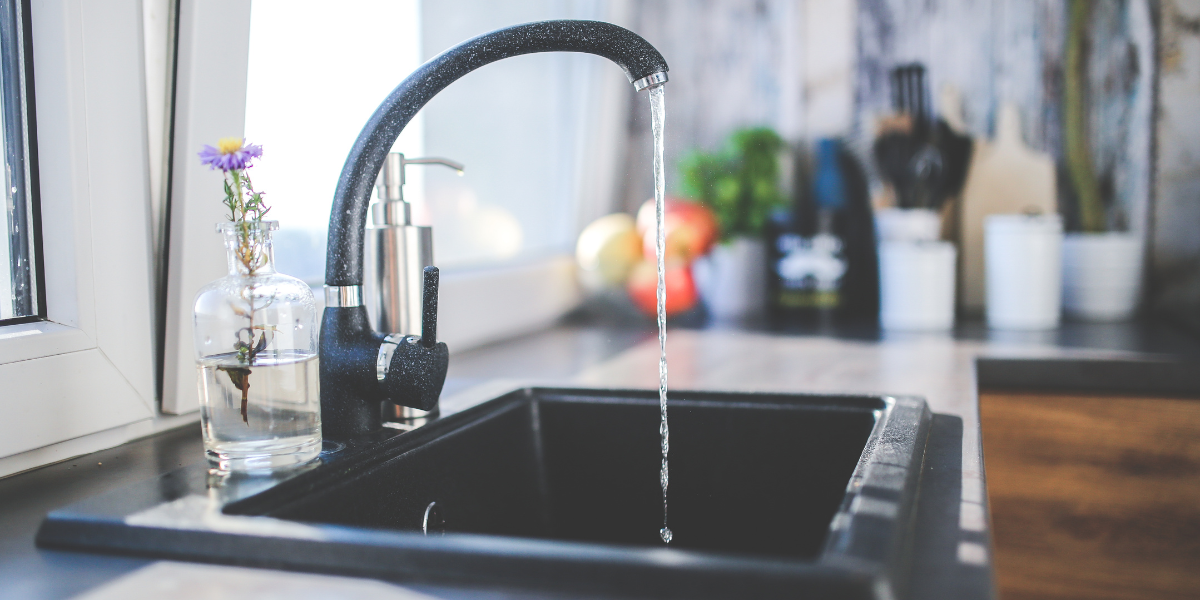Quick and Easy Faucet Repair Tips for Rancho
Faucet problems can be annoying. But fixing them with some quick DIY repairs can save you time and money. In Rancho, there are reliable services like Express Plumbing and Drain that can help. Knowing how to handle small faucet repairs is very useful.
This guide will show you what you need to fix common faucet issues. It will cover how to identify faucet types, steps for faucet repair in Rancho Mirage, and when to call a professional. Let’s look at how to keep your faucets from leaking and working well.
Key Takeaways
- Identifying your faucet type—ball, compression, cartridge, or disc—helps with accurate repairs.
- Common faucet issues like leaks, low water pressure, and mineral buildup can often be fixed with simple DIY solutions.
- Regular maintenance, such as cleaning the aerator and replacing worn-out washers, can prevent major faucet problems.
- If leaks persist, parts are damaged, or rust appears, professional plumbing services may be necessary.
- Express Plumbing and Drain in Rancho Mirage offers expert, fast, and transparent faucet repair services.
Understanding Different Types of Faucets
Knowing what type of faucet you have is important before you start fixing it. Different kinds of faucets work in their own way. They need special parts and ways to keep them in good shape and fix them.
Ball Faucets
Ball faucets are usually found in kitchen sinks. They have one handle that lets you adjust both hot and cold water using a rotating ball inside. These faucets are dependable, but their parts can break with heavy use. This may cause leaks or strange water temperatures. Fixing them usually means replacing the inner seals or the ball itself.
Compression Faucets
One of the oldest faucet styles is the compression faucet. It has two handles, one for hot water and one for cold water. These faucets use a simple system to manage water flow. Over time, the washers can wear down. This may cause the handles to drip or leak. Luckily, replacing the washer is usually easy. This makes this type of faucet simple to fix.
Cartridge Faucets
Commonly found in kitchens and bathrooms, cartridge faucets can have one or two handles. They have a cartridge that moves up and down to manage water flow and temperature. If you see problems with water flow or leaks, it is usually because the cartridge is damaged. This part can be easily replaced if you choose the right size.
Disc Faucets
A more modern style, disc faucets use a single handle and two ceramic discs to control water flow. They are very strong, but fixing them can be costly if they break down. This is because they need certain parts. Repairs usually mean swapping out the disc assembly or specific parts inside it.
Why Your Faucet Might Be Leaking
A leaky faucet is more than just a hassle. It can raise your water bill and waste a lot of water. Here are some reasons why your faucet may be having issues:
- Worn-Out Washers or O-rings: Washers and O-rings inside the faucet handle can wear out over time, especially in some faucets. When these little parts fail, leaks usually happen.
- Loose or Damaged Parts: Vibration, mineral buildup, or bumps can loosen or harm parts in your faucet. Tightening screws or changing broken parts can often solve the problem.
- Water Pressure Issues: High water pressure can put stress on the internal parts, causing leaks, mainly in faucets that can't take the pressure.
- Mineral Buildup: Hard water, which is common in many places, causes minerals to build up in faucets. These deposits can block the faucet's parts or stop it from sealing well.
Tools Needed for Faucet Repair
To make the repair process easier, gather these important tools before you start:
- Adjustable Wrench: Used for loosening and tightening nuts.
- Screwdriver Set: Needed to take apart different types of faucets.
- Allen Wrench: Often needed for removing faucet handles.
- Replacement Parts: Such as washers, O-rings, and cartridges.
- Plumber’s Tape: Helpful for making sure there is no water leak.
- Pliers: Great for holding and keeping things steady when taking apart and putting back together.
Preparing for Faucet Repair
Getting ready is important for a good DIY faucet repair. Here’s what to do before you start:
- Turn Off the Water Supply: Before taking anything apart, turn off the water. This will help you avoid a big mess. Find the shut-off valve under the sink and turn it to the right.
- Protect Your Workspace: Put a towel or cloth around the sink. This will stop small parts from going down the drain.
- Keep Parts Organized: While you are taking the faucet apart, put each part in order. This makes it easier to put everything back together. You will not lose any pieces.
Step-by-Step Guide to Repair a Leaky Faucet
Repairing a leaky faucet is easy if you follow these steps:
Step 1: Identify the Faucet Type
Knowing what type of faucet you have helps you fix it the right way. Look at the descriptions above if you’re not sure.
Step 2: Disassemble the Faucet
Using the right screwdriver or Allen wrench, carefully take off the faucet handle and other parts.
Step 3: Replace Faulty Parts
Check washers, O-rings, cartridges, and other parts for wear. If you find any damaged parts, replace them with compatible ones. You can find these at most hardware stores.
Step 4: Reassemble and Test
After changing the broken parts, put the faucet back together. Turn on the water supply and check for any leaks. If the faucet is still leaking, look over each part to make sure everything is sealed well.
Replacing Worn-Out Washers and O-rings
One common reason for faucet leaks is old washers and O-rings. This is especially true for compression faucets.
- Turn Off Water Supply: First, turn off the water supply to the faucet.
- Disassemble Faucet: Unscrew the handle to get to the inside parts where the washer and O-ring are.
- Replace Washer and O-Ring: Take out the old washer and O-ring. Then put in new ones that are the same size.
- Reassemble and Test: Put the faucet back together. Turn the water back on and check for leaks. This simple change can often fix small leaks right away.
Fixing Common Faucet Nozzle Issues
The faucet nozzle, especially the aerator, can get blocked because of mineral buildup from hard water. This leads to weak or uneven water flow.
- Clear the Aerator: The aerator is a small screen on the faucet tip that controls how water flows. Unscrew it, soak it in vinegar for around 30 minutes, then rinse it and put it back on.
- Adjust the Flow: Once you reattach the aerator, check the water flow. You should see a quick improvement if the aerator was dirty.
Troubleshooting Faucet Water Pressure Problems
Low water pressure in your faucet can come from several problems. These include clogged pipes, mineral buildup, or a faulty aerator.
- Clean the Aerator: As said, mineral deposits can block water flow. You can soak the aerator in vinegar or use a small brush to clean it.
- Check Water Supply Valves: Make sure the valves under the sink are fully open. Sometimes, valves that are not completely open can cause issues.
- Inspect for Clogs: If the pressure is still low, there might be clogs in the pipes. This could need more complex repairs or help from a professional.
How to Address Faucet Noise
Faucet noise, like whistling or banging, can show problems with water pressure or loose parts.
- Tighten Loose Parts: Use a screwdriver or wrench to tighten any loose parts in the faucet.
- Adjust Water Pressure: If noise continues, try changing the water pressure a bit. High water pressure can make whistling sounds in old faucets, so lowering it might help.
Signs You Need a Professional for Faucet Repair
While you can do easy repairs yourself, some faucet problems need a skilled expert. Getting help can save you money in the future. Here are times when you should call a professional plumber:
- Rust: If the faucet has rust, it may break down inside and need to be replaced.
- Leaks: Ongoing leaks, especially if they harm nearby areas, need expert repair to stop water damage.
- Damaged Parts: If parts like the valve seat or cartridges are broken, a professional can fix them faster.
Cost Considerations for Faucet Repair in Rancho Mirage
Repair costs can change depending on a few different things. This includes the type of faucet, the parts needed, and the work required. Here is a simple overview of the costs:
- Washer and O-Ring Replacement: $20-$50, mostly because of part costs.
- Cartridge Replacement: $60-$150, based on the cartridge type and faucet brand.
- Complete Faucet Replacement: $100-$300, which includes labor if you need a new faucet.
In Rancho Mirage, Express Plumbing and Drain offers clear and fair pricing. They provide upfront estimates that help you budget well.
How Express Plumbing and Drain Can Help You
When you need faucet repair, Express Plumbing and Drain in Rancho Mirage is a reliable choice. Their team of licensed plumbers can manage all kinds of faucet repairs, from easy fixes to full replacements. With more than twenty years of experience, they know what people in Rancho Mirage need. They offer quick services to keep your faucets working well.
Why You Should Choose Express Plumbing and Drain
Choosing Express Plumbing and Drain for your faucet repair gives you many benefits:
- Expertise and Experience: With over 20 years in the field, they bring a lot of knowledge and practical experience.
- Quick Response: They offer fast service, which helps reduce the trouble of a broken faucet.
- Quality Repairs: Their dedication to high standards makes sure each repair is long-lasting.
- Clear Pricing: You will get clear and straightforward estimates, so there are no surprises.
Conclusion
Fixing faucet problems can be simple. With the right tools and some know-how, you can stop small leaks, clean the aerator, and fix pressure issues. But if the repair seems too hard, feel free to call Express Plumbing and Drain. They will get your faucet working again quickly and help you avoid expensive repairs later.
Contact Express Plumbing and Drain in Rancho today for your faucet repair. Call them at (760) 600-9655.
Frequently Asked Questions
What faucet repair problems happen a lot in Rancho Mirage?
Common issues are leaks, problems with water pressure, and mineral buildup from hard water.
Can I use household vinegar to clean my faucet?
Yes, vinegar is great for breaking down mineral build-up in faucets and aerators.
How can I stop a faucet handle from leaking?
Replace old O-rings or washers. These are often the main cause of leaks in handles.
What’s the best way to handle noisy faucets?
Tightening loose parts or changing the water pressure can often stop faucet noises.
How long does a faucet repair typically take?
Most repairs take 30 to 60 minutes. This depends on how complex the repair is.


